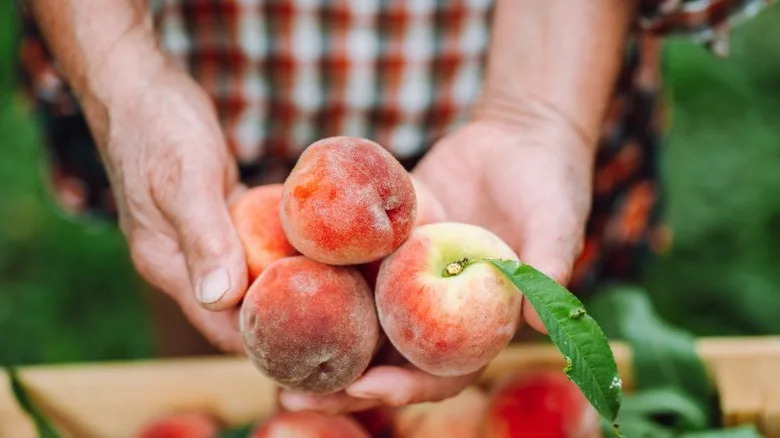
Long before Georgia even existed, that area was likely the first place in the future United States to grow peaches. The fruit arrived sometime in the 1500s, coming from China as part of Silk Road and European trade routes. These days, it is arguably the most famous food in the whole state. With such a long history of cultivation and strong associations, you'd think Georgia (which is even known as the Peach State) is still the country's top producer of the fruit. But it's time to challenge that assumption because, in reality, California grows far more.
According to data from the USDA National Agricultural Statistics service, California (which also produces the most oranges in the nation) harvested about 475,000 tons of peaches in 2022. Georgia was the third-biggest producer, with a yield of only 24,800 tons of peaches. South Carolina, which ranked second, grew 67,400 tons.
California's climate and excellent soil allow many tons of fruit to thrive there. In fact, it arguably has a massive advantage. According to the California Farmland Trust, if you added up the yields of 32 other peach-growing states, the total would still be lower than California's output. Two of the major types produced in the Golden State are clingstone and freestone. The clingstone variety is mostly used for processing — think canned fruit. Freestone peaches are often sold fresh.
Read more: 14 Canned Tomato Brands, Ranked Worst To Best
Climate Has Everything To Do With Production

Although California seems like an ideal place for growing peaches, the fruit can be very finicky. Within the Golden State are microclimates (or climates contained to a small area), each with its own set of qualities that make it perfect for certain types of peaches. For example, Florida Prince and Desert Gold varieties require about 100 hours of exposure to chilly temperatures (typically between 32 degrees and 45 degrees Fahrenheit) during the winter so they can ripen properly. Alternatively, the J.H. Hale Peach needs lots of chill hours (approximately 800) and has to be grown in a cooler microclimate.
So, what is it about Georgia that prevents it from matching California's growing power? As it turns out, a changing climate may be partly responsible. In recent years, the Peach State has experienced changing weather that has severely impacted the production of peaches. In 2023, there was an early heat wave in February that was followed by two frosts in the spring. That year, over 90% of the state's potential yield was destroyed. Despite the fact that farmers have been innovating and growing their crops to try and be resistant to changing weather, this event was catastrophic for Georgia peaches. According to The EPA, Georgia is in for generally warmer winters due to climate change — bad news for the peaches.
Read the original article on Mashed.







Comments